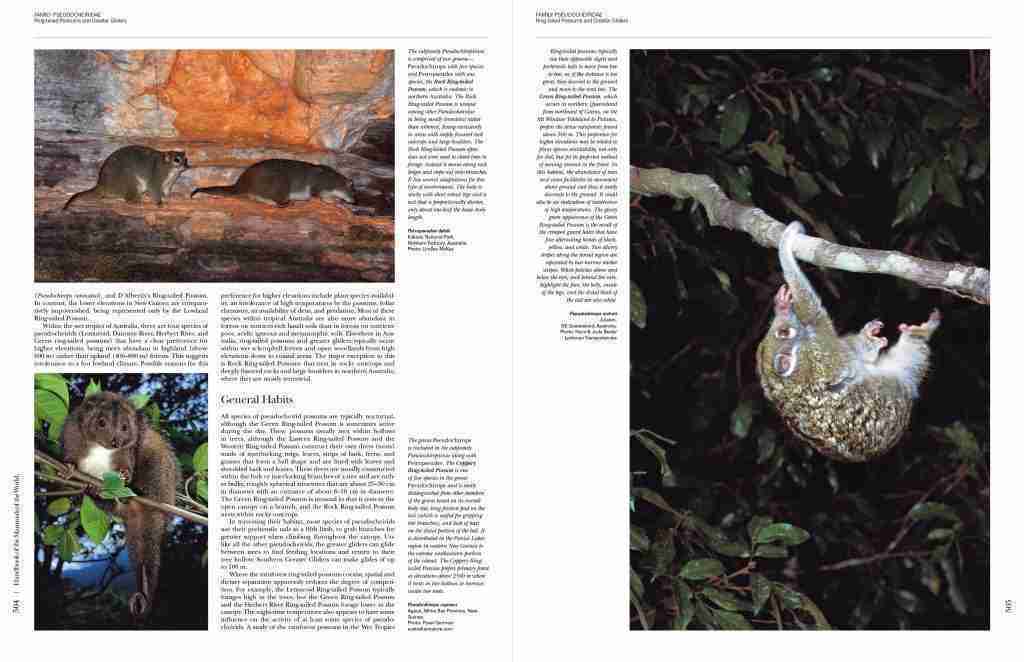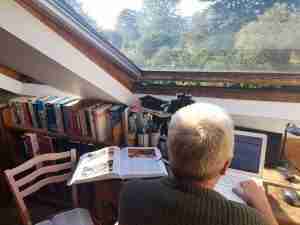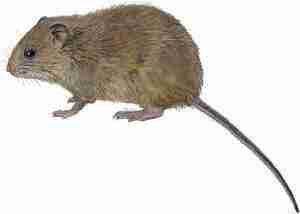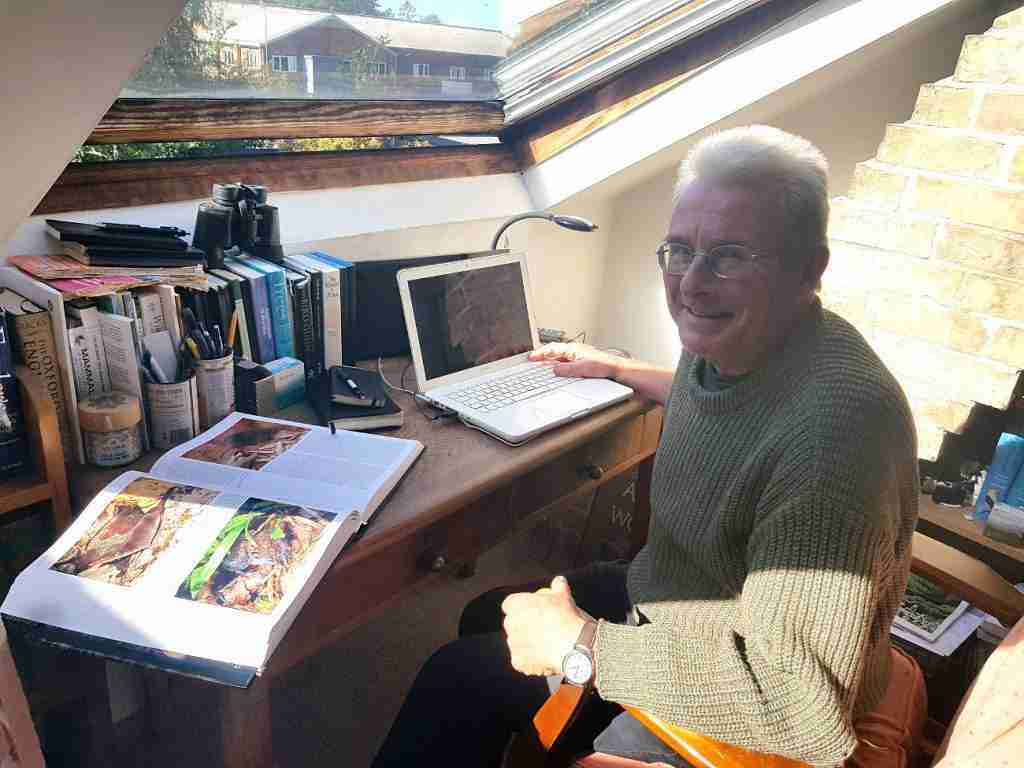Books, Interviews, Mammals
Confessions of a captionist, by Nick Langley
After a long and lucrative but unfulfilling career as a freelance business and technology journalist, I had the misfortune to fall among conservationists.
Gratefully leaving the world of computers and management-speak behind me, I took up the fulfilling but unlucrative role of editorial consultant at BirdLife International. I wrote news stories and feature articles, press releases and reports, and anything else that took the pressure off dedicated conservationists and enabled them to concentrate on their real work. I had a lifelong, amateur interest in wildlife and conservation, but for the first time at BirdLife I was surrounded by professionals. By keeping my head down, and my uninformed opinions mostly to myself, I learned a lot.
BirdLife was deeply involved in Lynx Edicion’s Handbook of the Birds of the World. I was lucky enough to be working there when Josep del Hoyo approached BirdLife’s Head of Communications, Ade Long, in search of a caption writer for a companion series to HBW, to be called the Handbook of the Mammals of the World. I will always be grateful to Ade for putting my name forward. He propelled me at a stroke into the heart of one of the most ambitious and fully achieved publishing projects of the new century.
I had already written a profile of Josep for BirdLife’s then magazine, World Birdwatch, and on the strength of this and Ade’s recommendation, he invited me to write some of the captions for HMW Volume 1, Carnivores.
To counteract my lack of obvious qualifications for the work, I had two strengths to offer from my journalistic background. One was the ability to get the necessary information into the right number of words. The other was the attention to accurate detail that comes from the constant fear of being sued. I wasn’t too concerned about the risk of legal action from disgruntled mammals, but fortunately the habit of checking everything against sources stuck with me.
The ability to get the right information into an exact number of words proved a bit two-edged. You don’t leave gaps in the columns of a magazine or newspaper, but the layout of HMW and HBW requires variation in the length of captions. I knew this, and I tried, but I was in the iron grip of long habituation to the dictates of fearsome editors and subeditors. If the space for a caption was 9.4 cm, I wrote a 9.4 cm caption. Every time. For page after page after page. Josep sent me regular emails imploring me to vary the length. I kept trying, but while I tried, I found myself going into ever deeper levels of detail to fill out the captions, extra work which even as I wrote it I knew would be cut. We were several volumes into HMW before varying the caption length came naturally.

If I had expected the pace of book-writing to be more leisurely after the demands of daily, weekly and monthly journalism, I was soon put right. HMW has followed a punishing publishing schedule of nine volumes in eleven years, providing a complete synthesis of what is known about the world’s mammals. Each volume is organized around a major order- Carnivores, Hoofed Mammals, Primates, Rodents, and Bats, for example- and contains up to 1000 pages, more than half of which are devoted to comprehensive accounts of each and every known species. The text and species accounts for some of the larger families can amount to half a million words in a single chapter. Many book-length monographs are shorter than this.
Then there are the pictures, hundreds of photos per volume painstaking collated by picture editor José Luis Copete, and each personally approved by Josep. Bringing these together in one place is another of the major achievements of HMW. Here you will find the best work of the best known wildlife photographers, and also pictures of rare and range-restricted species from hard-to-reach places by local photographers, whose work may be appearing in an international publication for the first time.
However reputable the photographer, or specialized the photo-library, the species depicted are not always accurately identified. Writing new captions against the clock for new or re-identified photos carries some of the buzz I remember from my years as a journalist. It’s exhilarating, but with the added pressure that mistakes won’t be forgotten the day after tomorrow: they will be on the shelves of institutional libraries for generations to come.
Sometimes the big photo libraries can’t help, and finding the right -or even the only- picture of a species is a task demanding dogged, tireless persistence. HMW8 almost went to press with a stuffed Cuban Solenodon, apparently the only picture available, until on the eve of publication, the indefatigable José Luis tracked down an excellent photo of this rarely seen black-and-white shrew-like beast in the wild.
Indefatigable, and remarkably patient. My job as captionist is to provide text which describes the species shown, and explains what they are doing in the context of the family as a whole. It isn’t always easy to interpret postures frozen in the moment. (It helps to get the anatomy right. Fortunately we realised in time that what was first described as the penis of a rampant male kangaroo was actually the tail of a joey in its mother’s pouch). I bombarded José Luis, and Amy Chernasky and Ana Conesa, the assistants to the editors, with a stream of queries ranging from the fatuous (mostly), to the very occasionally useful. I look back with pride to the day when, after half an hour or more staring at a page proof picture of a pangolin suspended above a branch by the tip of its tail, I sent Amy an urgent email asking whether it might be upside down. I suspect that the matter had long been put right, but she thanked me anyway.
Under the tutelage first of Amy, and subsequently of Ana, I was introduced to the rigours of the HMW house style -sorry, rigors; HMW uses American English. Already struggling with the lapses of concentration, and of coherent thought in general, that can be expected from a burned-out journo in late middle age, I occasionally faced the challenge of working back-to-back on HMW captions, HBW captions (English English, but with -ize endings and the Oxford List Comma), and news and features for BirdLife (-ise endings; the Oxford List Comma scorned).
During the last twenty years or so, the application of molecular methods to phylogenetic studies has resulted in what has been called a taxonomic explosion (though sceptics say that the explosion of species concepts has resulted in taxonomic inflation). Species have also been separated by taking as diagnostic differences in size, colour, or characteristics such as the shape of horns, or the proportion of tail length to body length, which were previously treated as variation within one species. In one subfamily alone, Murinae (true mice and rats), 123 species and 16 new genera were described between 2005 and the publication of HMW7 in 2017. Rodents now account for 40% of all known mammal species, and two volumes of HMW were needed to cover them.

Similar expansions are happening in other families. Among the Bovidae, for example, one antelope, the Cape Blue Duiker, became nine species, and another, the Klipspringer, was split into eleven. The process is so volatile that species were sometimes added (or less often, removed) while the relevant chapter of HMW was in preparation.
The taxonomic explosion presents challenges for picture researchers, and for the hapless captionist. Photo library labels that predate the multiplication of species may provide insufficient detail about location to separate them. For example, instead of one Sitantunga, there are now five species of these swamp-adapted antelopes, each of them native to one of Africa’s major wetland systems. More than one species may be found in a country (two occur in DR Congo, two in Sudan and two in Tanzania, for example), so an old label that gives only the country as a location will not be enough to separate them. Since the diagnostic characteristics do not always show up well in photographs, and are in some cases invisible to anyone outside a laboratory, even the authorities who described the new species may not be able to identify them with confidence from a picture alone.
When critical decisions often have to be made on so little information, it is inevitable that, now and again, authors will change their minds about an identification, requiring captions to be amended, or new ones written. Usually these changes can be accommodated without too much disruption of the publishing schedule, but one author waited some nine months after a chapter had been laid out, until days before the volume was due to go the printer, before telling us that two out of the nine pictures had been misidentified. Putting this right took some exceptionally fast picture researching from José Luis, and new captions from me, written under the additional pressure of knowing that they would go straight to page, as a journalist would say, with no further editorial intervention.
Taxonomists do a great job of finding cryptic species and splitting them from what were previously regarded as single widespread species. As far as I am able to judge, they are also good at providing the species they find with appropriate scientific names. Though I lack a classical education, I can recognize many of the bits of Latin and Greek they assemble the names from: brevicaudus meaning short-tailed, nigricollis meaning black-necked, argentiventer (silver + belly), and so on. We will here overlook Chiropotes albinasus. Described from a museum specimen, this bearded saki monkey was given a specific name that means white-nosed; it was subsequently found to have a red nose when alive.
Sadly, the same taxonomists can suffer a failure of imagination when it comes to common names. For example, according to the chapter on the Miniopteridae (Long-fingered Bats) in HMW9, Shortridge’s Long-fingered Bat is smaller than both the Little Long-fingered Bat and the Small Long-fingered Bat.
There’s also a Large Long-fingered Bat, a Great Long-fingered Bat, a Greater Long fingered Bat which is smaller than the Great Long-fingered Bat, a Lesser Long-fingered Bat, a Least Long-fingered Bat which is bigger than the Little and Small Long-fingered Bat, and an Intermediate Long-Fingered Bat. Oh, and an African Long-fingered Bat, which is one of 12 long-fingered bat species found in Africa, and not the most widespread. Trying to explain all this in the short space of a caption without losing the reader’s attention is another challenge, as I’ve probably just demonstrated.
A surprising number of bat species are called “the Brown…”, as if this were a distinguishing feature, rather than a characteristic of 99% of all known bats. Now and again, however, some real wit can surface when new mammals are named. The rare and little-known taxon recently split from the Common Sword-nosed Bat is called the Uncommon Sword-nosed Bat. (It gets better when you think about it.)
In other bat families, some rather poetic naming has crept in -the Eloquent Horseshoe Bat, the Fierce Bonneted Bat (conjuring up an angry Jane Austen character), the Strange Big-eared Brown Bat -but the reasons for these epithets are never explained. What, we may wonder, has the Dubious Trumpet-eared Bat been up to? Similarly with rodents. Who did Rattus burrus upset to be dismissed with the name Nonsense Rat? Is the Buffoon Striped Grass Mouse any sillier than the many other species in its genus?


Nor are we told why the Kopet Dag Pine Vole, (Microtus paradoxus) is also known as the Paradox Vole. Paradoxes abound in mammal naming. There’s the Large Short-tailed Rat from Madagascar, which on examination is smaller than the Small Short-tailed Rat, which lives further up the slopes of the same mountains. The tail of the Large rat is however longer than the tail of the Short version. Perhaps the name needs to be read differently, and it’s the Short-tail that’s Large, not the Rat.
Some common names are a poem in themselves. Who could resist the Green River Basin Golden-mantled Ground Squirrel? I also like this species because you only have to mention it twice, and you already have most of a caption. (Conversely I didn’t get much lineage from the Great Evening Bat, which has the shortest scientific name, Ia io, of any living organism.)
Sometimes a discoverer’s name, or a place name, and the outstanding characteristics of a species, can be brought memorably together. Who could forget Woosnam’s Broad-headed Stink-rat, or Bastard’s Big-footed Mouse? At least, HMW calls it Bastard’s Big-footed Mouse, because it’s named after Monsieur Bastard. In other publications, it’s called the Bastard Big-footed Mouse, as if it bit someone while they were naming it.
There’s a modern tendency to avoid common names commemorating the intrepid naturalists who discovered species that were probably perfectly well known to the locals. There are no such restrictions on awarding specific names which celebrate great naturalists, or recognise workers in the field, or which give a form of immortality to an old mate who may feel the obligation to do the same for you.
There’s the ubiquitous geoffroyi, from the great French naturalist after whom a host of primates, bats, and cats are named, not to mention birds and fish. There are Madagascan species named grandidieri and petteri in honour of other French naturalists (we have already encountered the French Madagascar specialist immortalised as bastardi). Another Frenchman who carried out pioneering research on Madagascar’s mammals, Alphonse Milne-Edwards, has mostly had his name chopped down to edwardsi, (though he’s given both barrels for a serow and a sea-snail). If he’d lived a little later he might have seen his name rendered in full, alphonsemilneedwardsi, as in Akadon josemariarguedasi (Argueda’s Grass Mouse, described in 2013), Chiropodomys karlkoopmani (Koopman’s Pencil-tailed Tree Mouse, 2016) or Callicebus stephennashi (Stephen Nash’s Titi Monkey, 2002). There’s even a genus of mouse rejoicing in the name Brucepattersonius, after the curator of mammals at the Chicago Natural History Museum. They are known as Brucies for short. Alison Jolly, however, a lemur specialist who was very influential in the conservation of Madagascar’s fauna, gets a terse jollyae in the single species of mouse-lemur named after her.
Although I can count the compliments and thanks I’ve received from chapter authors on the two fingers I type with, relations between captionist and author have generally been cordial. Once or twice however, usually when I’ve had to make use of external material to write captions, there have been problems.
For example, it may be the case that all members of a genus or family munch away on a similar unvarying diet, such as earthworms, or grass-seeds, or tubers. The search for fresh material or new angles to provide six successive captions on food and feeding will have me shuffling through the literature cited by the author, and sometimes beyond. Most authors are relaxed about this, but on occasion I’ve unwittingly stumbled into an academic feud. Lumbered with a chapter in which the author had dealt at length with his own specialist area, and provided only the sketchiest of material on other topics, to fill in the gaps I turned to the papers of another specialist, perhaps the only other specialist, who was chair of the IUCN special interest group on the family. When the captions came back from author review, every line I’d taken from her work had been red-penned, with comments such as “this is an old wives’ tale”. Another author peppered the captions with angry queries: “not true!” “where is this from?”, only to subside when it was pointed out that in each case the source was a paper he had co-authored.
Around 20 years ago I commissioned a local cabinet maker, who specialised in building furniture from the wood of elms killed by Dutch Elm Disease, to build me a bookcase. He was a fine craftsman, but perhaps not much of a reader, and the one of the shelves was some 13 inches deep. For many years the only books of mine which took up this headroom was a pair of dictionaries. Then I received my contributor’s copy of the first volume of HMW, and it was a snug and perfect fit. Currently I have eight volumes of HMW, plus four volumes of HBW for which I also provided captions, and when I receive the ninth and last volume, Bats, the shelf will be full. That might seem like a fitting conclusion to my career as a captionist. On the other hand, I could always commission another bookcase.
Nick Langley

 Español
Español Català
Català 简体中文
简体中文


